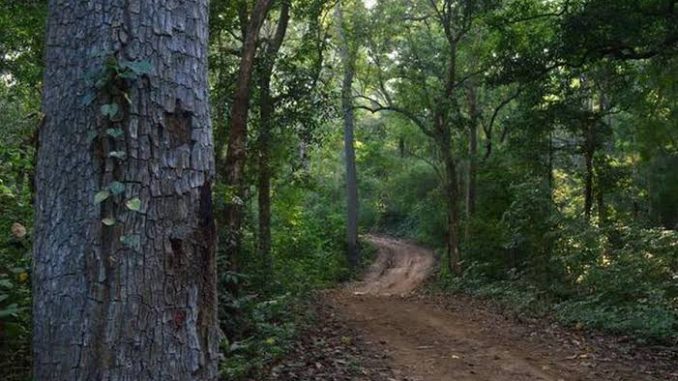
In News
The forest survey of India or the India State of Forest Report (ISFR) released by the Ministry of Environment Forest & Climate Change (MOEFCC) showed that the overall forest cover in the country has increased.
In-Detail
As per the ISFR 2019 data, forest cover in the country has increased by 3,976 sqkm.
But, there is a sharp decline in forest cover in northeastern states of Arunachal Pradesh, Manipur and Mizoram.
The total forest cover of the country is 7,12,249 sqkm which is 21.67% of the geographical area of the country.
It is 0.12% more than last year.
ISFR
- The ISFR is done biennially.
- It assesses forest and tree cover, bamboo resources, carbon stock and forest fires.
- States that showed an increase in forest cover are Karnataka, Andhra Pradesh and Kerala.
- State with the highest forest cover is Madhya Pradesh.
- States with the highest proportion of forest cover are Mizoram (85.4%), Arunachal Pradesh (79.63%) and Nagaland (75%).
- In the assessment, tree cover which is defined as patches of trees less than 1 hectare and is outside recorded forest area, grew by 1,212 sq. km.
- The total green cover of the country thus increased by 5,188 sq km or 0.6%. This is an area the size of Goa and Delhi combined.
- The total tree cover of the country as per ISFR data stood at 8,07,276 sq km.
- The area with trees and forest cover made up 25.56% of the total area of India. In the earlier assessment, it was 24.39%.
- As per the Ministry, the decline in tree cover in forest areas is due to the issuance of land titles to tribal population and increase of tree cover outside forest areas in the form of plantations and afforestation activities.
- However, there are some variations in the canopy density as per the data.
- Moderately Dense Forest (MDF) area of 1,755 sq km became very dense forest (VDF) and 2,782 sqkm of MDF regressed into lower quality ‘open forest (OF),’ Scrub forest’ or ‘Non forest.’
- The officially classified forests, either by states or centre, have decreased a little by 330 sqkm.
- Forests that are outside the recorded area have increased by 4,306 sq km.
- Tree cover outside forest area comprised 29.38 million hectares which were 36.4% of the total tree and forest cover.
Ujjwala Connection
- While releasing the ISFR report, Environment Minister Prakash Javadekar pointed out that sustained conservation efforts, afforestation efforts, and other government policies have led to the rise in forest cover.
- He particularly mentioned the impact of Pradhan Mantri Ujjjwala Yojana in reducing dependence on forests for fuelwood.
- As part of the ISFR 2019, a survey was conducted in 1,110 villages in the forest fringes to study the impact of Ujjawala Yojana and the usage of forests for fuelwood, fodder, and bamboo.
- In the assessment, it was found that those living in the forest fringes collected 8,52,90,000 tonnes of fuelwood, 105,30,39,000 tonnes of fodder, 584,8204 cubic metres of small timber and 18,34,000 tonnes bamboo annually.
- Maharashtra witnessed the maximum removal of fuelwood at 95,39000 tonnes. The state is followed by Odisha and Rajasthan.
- Per person removal of fuelwood is highest in Nagaland followed by Himachal Pradesh and Tripura.
- Overall, there is less demand for fuelwood due to the free availability of cooking gas with Ujjawala Yojana.
Best IAS Institute in Delhi,Best IAS Academy in Delhi, Best IAS Coaching in Delhi

Leave a Reply
You must be logged in to post a comment.